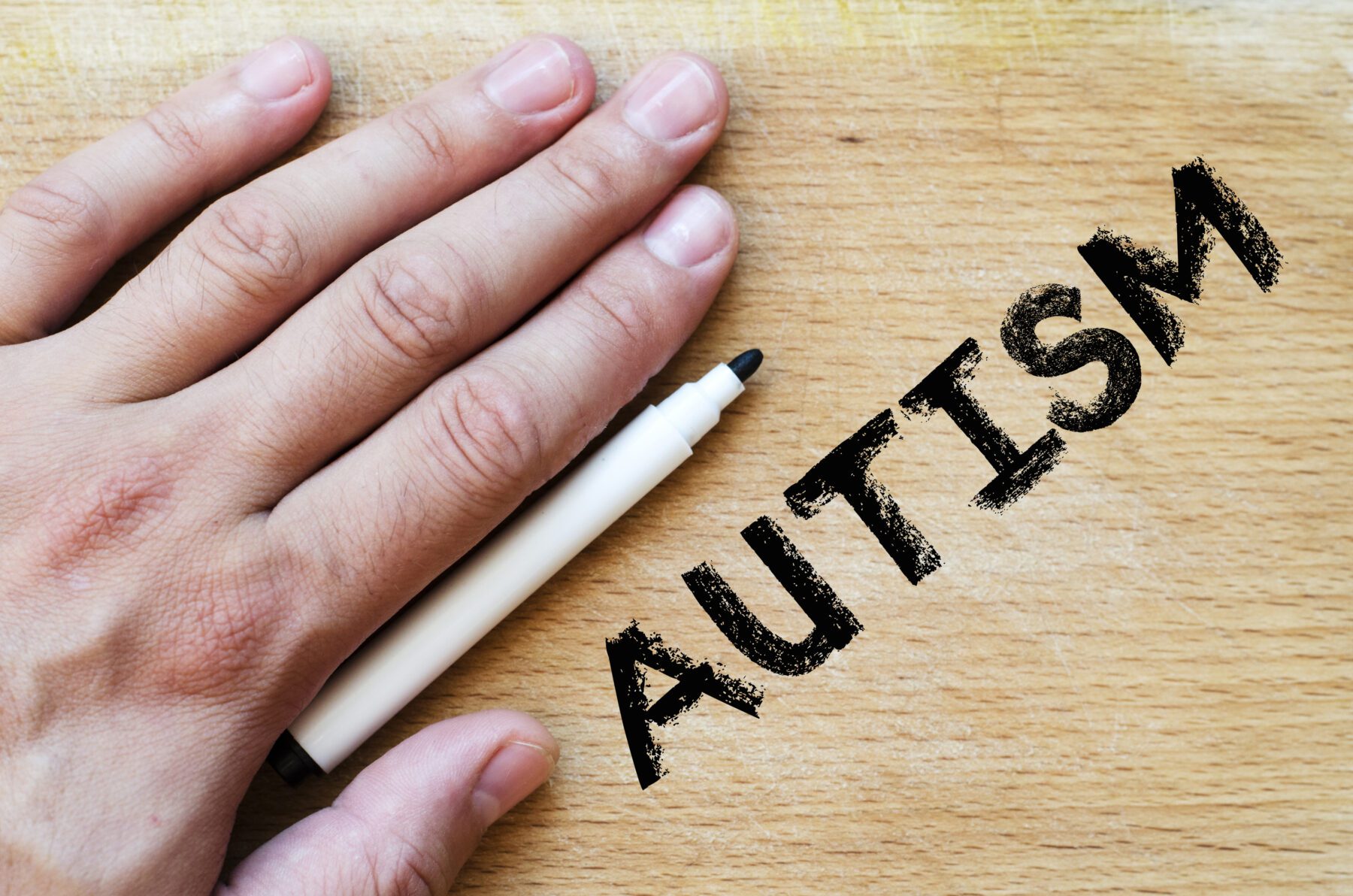
Autism spectrum disorder is a neurodevelopmental condition with a wide range of signs, symptoms, and abilities.
Every person on the spectrum is different and manifests a unique pattern of behavior.
Read on to find out more about the symptoms and signs of autism, how this disorder affects everyday life, and the ways applied behavioral analysis (ABA) therapy can help your autistic child.
Causes of Autism
Autism spectrum disorder (ASD) is a neurological and developmental condition that impacts how a person perceives the world and communicates with others. An estimated 1 in 54 children in the United States are diagnosed with autism spectrum disorder. The condition is three to four times more common in boys than in girls.
Until recently, scientists believed that autism was caused mostly by genetic factors. However, newer research indicates that the environment may also play an important role in the development of autism spectrum disorder. In other words, if someone is genetically predisposed to autism, environmental elements will increase their risk of having the condition.
Environmental factors that may contribute to autism include:
- Taking antidepressants in the first three months of pregnancy
- The use of medications such as valproic acid (Depakene) or thalidomide (Thalomid)
- Viral infections during pregnancy
- Nutritional deficiencies in early pregnancy, particularly not getting enough folic acid
- Exposure to chemical pollutants, such as heavy metals and pesticides, while pregnant
- Advanced age of either parent
- Complications at birth or shortly after birth, including very low birth weight, oxygen deprivation, and neonatal anemia
- Extreme prematurity.
A controversial 1998 research proposed a link between autism and the MMR (measles, mumps, and rubella) vaccine. However, multiple studies have since shown that the disorder is not caused by vaccines.
Symptoms of Autism
Autism is usually diagnosed in early childhood. Most parents start noticing autism symptoms in their children around the age of two. At the same time, some children may develop normally to then suddenly become withdrawn and lose previously acquired language and other skills.
Autism symptoms in babies
Autism can be diagnosed with early signs in babies as young as two months old. While this condition doesn’t affect physical appearance, it influences the way they communicate and relate to the world around them.
Lack of eye contact
By the time they are two months old, babies typically make eye contact with others. Infants who are affected by autism spectrum disorder make less or no eye contact at this stage.
Limited facial expressions
At four months old, babies should be able to copy facial expressions, such as smiling or frowning, as well as to smile spontaneously. However, autistic babies usually don’t respond to their caregiver’s facial expressions.
Not responding to their name
At six months, most babies show an awareness of their own names. Babies who later develop autism typically don’t respond to their names at this age.
Little pointing or gesturing
From around nine months, your baby should be able to point things and copy the gestures of the people around them. Autistic babies gesture much less and show a lack of nonverbal communication in general.
Decreased joint attention
Joint attention—where a baby’s gaze follows an object you’re showing them—is an essential way of interacting with others. Babies with autism spectrum disorder are often unable to pick up on these nonverbal communication cues and will ignore you and the object you are pointing to.
Autism spectrum disorder symptoms in children
As your child gets older, autism symptoms become more diverse. They typically include verbal and non-verbal communication difficulties, impaired social skills, and highly inflexible behaviors.

Delayed language or speech
Most children with autism have at least some level of difficulty when it comes to speech and language. They often start talking late and understand fewer words than their neurotypical peers. An estimated 40 percent of autistic children have no language at all.
The signs of speech and language difficulties in children with autism spectrum disorder include:
- Speaking in an unusual tone of voice or with an odd rhythm or pitch
- Repeating the same words or phrases over and over again
- Repeating questions instead of answering them
- Making grammatical errors
- Using wrong words
- Not understanding simple directions
- Taking what is said literally.
Nonverbal communication difficulties
Children with autism spectrum disorder usually have trouble picking up on subtle nonverbal cues and understanding body language, which makes social interactions difficult.
Symptoms of nonverbal communication difficulties include:
- Avoiding eye contact
- Limited use of facial expressions and gestures
- Not understanding other people’s facial expressions, tone of voice, and gestures
- Atypical reactions to bright lights, smells, textures, and sounds
- Unusual posture or movements, such as exclusively walking on tiptoes.
Social difficulties
Basic social interactions may be challenging for children with autism spectrum disorder. They will typically display signs of social difficulties such as:
- Lack of interest in other people
- Difficulties connecting with others and making friends
- Trouble understanding feelings and talking about them
- Not playing pretend games, engaging in group games, imitating others, or using toys in creative ways.
Inflexibility
Children with autism often have inflexible behaviors and interests, for example:
- Following strict routines
- Difficulty adapting to changes and transitions from one activity to another
- Unusual attachments to toys or objects
- Lining toys up or arranging them in a certain order
- Having restricted areas of interest
- Focusing on one specific part of an object such as the wheels of a toy car
- Repeating the same actions or movements (flapping hands, rocking, twirling, or spinning objects).
Autism symptoms in adults
While severe forms of autism spectrum disorder are discernible before the child turns two, high-functioning individuals are often not diagnosed until later in their lives.
The most common symptoms of autism spectrum disorder in adults include:
- Difficulty understanding other people’s feelings and thoughts
- Struggle to interpret facial expressions and body language
- Avoiding eye contact
- Being unable to keep up with conversations
- Feeling anxiety in social situations
- Difficulty expressing feelings
- Limited interest in certain subjects or activities
- Preference for being by themselves.

Areas That Autism Can Affect
Autism affects many different areas of everyday life. Here are just a few of them:
Social interactions
Social dysfunction is one of the main characteristics of autism spectrum disorder. Individuals with autism can show little interest in the world around them and have a limited understanding of other people's feelings. They often experience social interactions as unpredictable and frightening, for example, they may not understand the purpose of saying hello and goodbye, showing facial expressions, waiting for their turn to speak, or maintaining eye contact. As a consequence, they may find it difficult to form friendships, which can lead to social isolation.
Repetitive behaviors
Many children and adults with autism spectrum disorder display repetitive behaviors such as hand flapping, rocking, and tapping. Repeating certain gestures and actions is often seen as a soothing activity that provides a sense of control in stressful situations.
Anxiety or excess worry
Anxiety disorders, including obsessive compulsive disorder, phobias, and social anxieties, are the most common comorbid conditions in people with autism. Intense levels of stress and anxiety are often related to changes in routines or environment and can affect a person both psychologically and physically.
Delayed cognitive skills
Autism spectrum disorder commonly affects cognitive skills. As a consequence, children on the spectrum often struggle with focus, transitions, memory, time management, as well as emotional control. These challenges may impact their learning and development.
Unusual eating and sleeping habits
Atypical eating behaviors, like limited food preferences, hypersensitivity to food textures, and holding food in the mouth without swallowing, can be seen in most children with autism.
In addition, sleep problems are much more common among autistic than neurotypical children. Autism is often accompanied by other conditions, such as gastrointestinal problems, attention deficit hyperactivity disorder (ADHD), and anxiety, which can make falling and staying asleep even more difficult.
How ABA Therapy Can Help Your Kid with Autism
Applied behavior analysis (ABA) is a type of therapy that focuses on changing unwanted behaviors while reinforcing desirable ones. ABA therapy is currently the most effective form of autism treatment, with an improvement rate of over 90 percent.
ABA therapy can help your child to build and strengthen social skills and social communication skills, for example:
- Improve language skills
- Increase their attention, focus, and memory
- Teach them to follow directions and instructions
- Help them understand social cues like facial expressions and body language
- Teach them how to initiate conversations and respond to questions
- Reduce problematic behaviors such as aggressiveness and meltdowns
- Help them acquire basic academic and pre-academic skills.
Applied behavioral analysis therapy uses positive reinforcement in the form of rewards and other incentives. When a desirable behavior is rewarded by a special treat or activity, the child is more likely to repeat the action. Over time, this method can encourage positive behavioral changes in children diagnosed with autism.
ABA therapy breaks down essential skills into small, concrete steps. It then builds toward more significant changes in functioning and independence levels. ABA therapy sessions for autistic children typically include a combination of play, direct instructions, various activities, adaptive skills training, as well as parental guidance.





